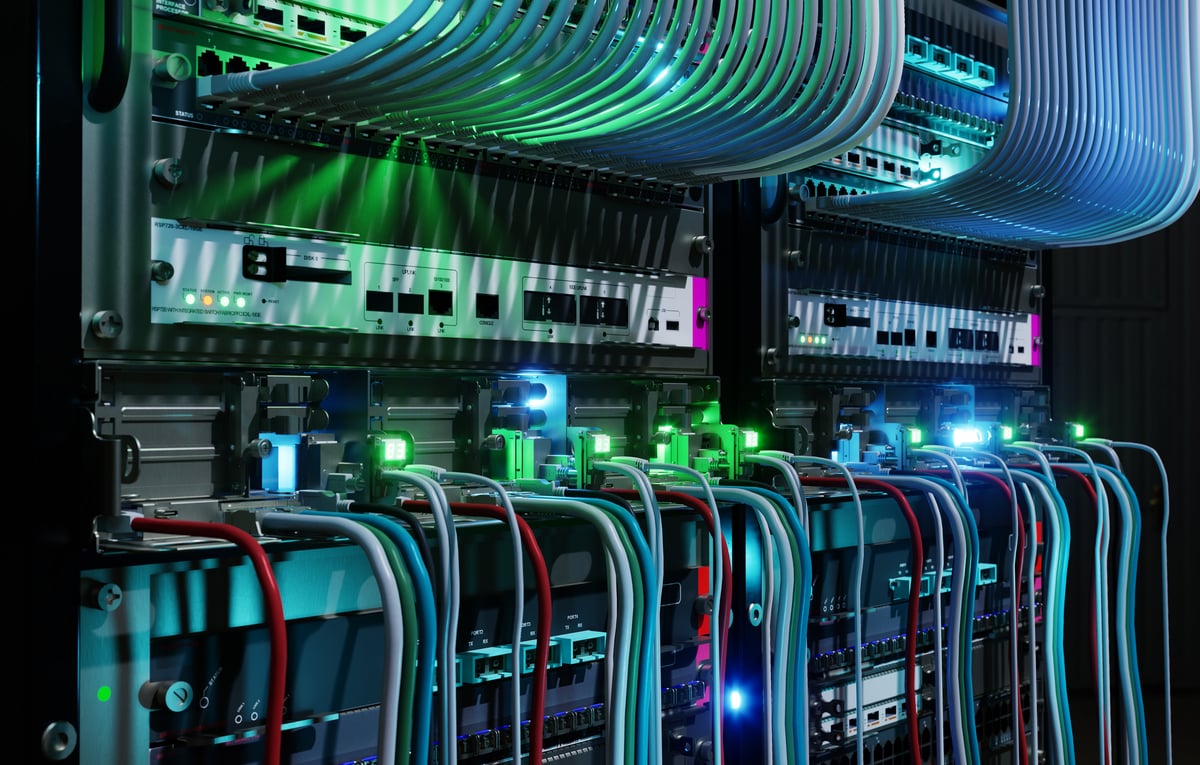Artificial intelligence (AI) has an energy problem that software can't solve. Racks of Nvidia H100-class systems commonly run 20 to 40 kilowatts, and many new AI designs target 50 to 100 kilowatts or more with liquid cooling. The result: Hyperscalers are choosing data center locations based on power grid capacity rather than tax breaks or fiber access, and utility companies are scrambling to upgrade transmission infrastructure that wasn't designed for industrial computing loads.
This power constraint is creating winners in unglamorous businesses. Thermal management specialists are designing cooling for unprecedented heat densities. Electrical equipment makers are building distribution gear that stabilizes sudden graphics processing unit (GPU) power surges. Specialty contractors are constructing transmission lines that must be completed before facilities can break ground.

Image source: Getty Images.
These three AI infrastructure plays capture unavoidable costs that scale with every new AI cluster, regardless of which chip architecture ultimately dominates.
The thermal management specialist
Vertiv (VRT +1.93%) designs and manufactures thermal management systems, power distribution units, and turnkey modular data center halls for AI deployments. The company's cooling solutions address the challenge of AI racks that commonly run 20 to 40 kilowatts, with many designs targeting 50 to 100 kilowatts or more compared to the 5 to 15 kilowatts traditional server racks produce, requiring both air-cooled and liquid-cooled architectures.

NYSE: VRT
Key Data Points
Q3 2025 results showed strong performance, with raised full-year guidance reflecting order backlog tied directly to AI infrastructure builds. The equipment sales model creates multiyear revenue visibility as cooling systems require regular maintenance and eventual replacement, while new data center construction drives incremental demand from hyperscalers, colocation providers, and enterprise customers.
The electrical distribution leader
Eaton (ETN +3.51%) manufactures electrical power distribution equipment, backup power systems, and control software for commercial and industrial customers, including data centers. The company's data center portfolio includes uninterruptible power supplies, power distribution units, switchgear, and busway systems that manage electricity from the utility connection down to individual server racks.

NYSE: ETN
Key Data Points
Eaton recently launched detection and control systems designed to manage the sudden power bursts GPU clusters create when hundreds of processors spin up simultaneously. The systems address grid-to-chip instability that wasn't a concern in traditional server environments, where power draw remained relatively constant.
The company's ability to deliver integrated power solutions from utility-level gear through rack distribution creates a competitive advantage in complex builds, while decade-plus replacement cycles for major power gear generate recurring service revenue alongside new construction demand.
The grid infrastructure builder
Quanta Services (PWR +0.89%) provides specialty contracting services for electric power, pipeline, and communications infrastructure, including the design and construction of transmission lines and substations.

NYSE: PWR
Key Data Points
The company's electric power division handles the large-scale projects utility companies need to complete before hyperscalers can energize AI campuses. This work includes building high-voltage transmission lines, upgrading substations to handle increased load, and installing transformers that step down power from transmission voltages to usable levels.
Recent revenue growth and a raised 2025 outlook reflect contracts tied to grid modernization projects that utility companies must complete before data centers can break ground. Quanta captures infrastructure spending that happens months or years before the first GPU gets racked, with multiyear project timelines providing visibility into revenue beyond 2026.
The power infrastructure advantage
These three AI spillover stocks won't move in lockstep. Quanta's revenue lumps with project milestones, Eaton's business extends beyond data centers, and Vertiv faces competition from legacy HVAC manufacturers. But the physics work in each company's favor: AI clusters need power delivery and thermal management before any software runs.
Furthermore, the AI power bottleneck isn't temporary. As AI workloads scale and new architectures emerge, the constraint remains: Every processor needs electricity and cooling. These three capture infrastructure spending that happens regardless of whether future AI runs on Nvidia GPUs, custom accelerators, or architectures that don't even exist yet.





